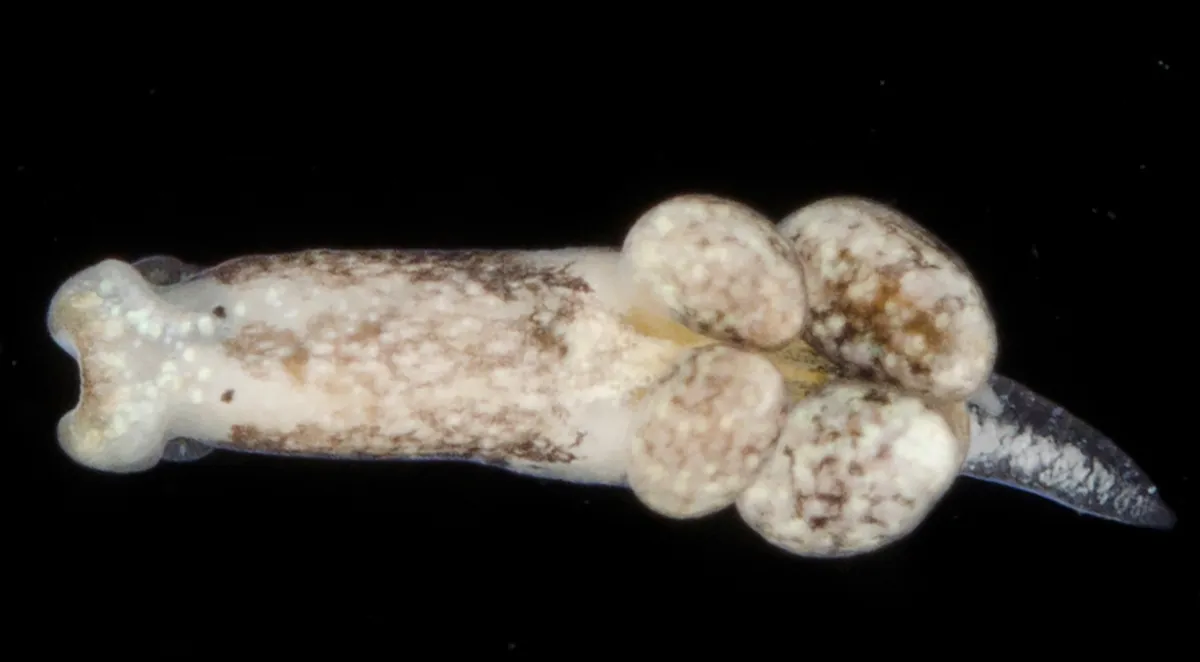Olea hensoni was discovered by a museum curator when walking along a sandflat on Cedar Keys waterfront in Florida, and has been named after the The Muppets creator Jim Henson.
The name of the slug came after was inspired by its creamy brown to yellow colouring– a standout in a group that is iconically green.
“It made me think of Kermit the Frog’s song ‘It’s not Easy Being Green,’” says Patrick Krug, professor of biological sciences at California State University. “That made me laugh because I remember being a kid, eating eggs for breakfast and watching ‘Sesame Street.’”
“Jim Henson was one of those people who created things that were educational, positive and impactful and made the world a better place. That’s something that should be honoured.”
O.hensoni is part of the sacoglossan family in which there are over 300 species and are usually enthusiastic eaters of plants which result in them turning green to resemble a leaf.
They have been given the nickname the, “solar-powered slugs”, because of their ability to keep algae alive inside their bodies in order to photosynthesis their food and making them both a combination of plant and animal.
Gustav Paulay, who first found the species, is the curator of invertebrate zoology at the Florida Museum of Natural History. When he uncovered the egg mass, he spotted a sea slug that was the size of a grain inside the mass.
“I assumed it was a well-known species,” he says. “I know its relative from the northeast Pacific quite well, so I figured, ‘Okay, good, we got an Olea’ and put it in the bag.”
However when Paulay got in contact with Krug, an expert on sacoglossan, they realised that this was a new species and a particularly unusual one.
Unlike the other sacoglassans, O.hensoni is one of the few species which seems to have gone rogue and instead preys on eggs of fellow snails and slugs.
“In the middle of this group of super-herbivores, there are a couple of species that have rebelled in ‘The Hills Have Eyes’ kind of way and have gone almost full-blown cannibal,” says Krug.
Paulay says O. hensoni is a prime example of how much marine life remains to be discovered, even in the aquatic equivalent of a backyard. This will be only the third documented egg-eating sea slug species.

Currently researchers have not established when the slugs changed their diet from plant-to-egg.
In order to protect their eggs slugs and snails will encase them in a mucus ball, but O.hensoni is able to predate them nonetheless.
“Unlike the switchblade-like tooth of its plant-eating relatives, O.hensoni has a tooth nubbin, which it can punch into jelly-like egg masses to suck out the eggs or embryos like someone sucking up boba from bubble tea,” explains Krug.
Main image: Olea hensoni is shown from the top, facing left. The bulbous structures on its back end are known as cerata and are common features on sea slugs. Krug and Paulay are unsure if the slug’s diet of eggs is an advantage over its fellow slugs or if it may ultimately limit the evolution of its lineage, becoming a dietary dead-end. © Florida Museum, photo taken by Gustav Paulay